This week I want to feature a few of the events that will be taking place during the Medieval Canterbury Weekend 2020 and link them to medieval Canterbury. However, before that I just want to say that Dr Martin Watts will be speaking at the Canterbury branch meeting of the Historical Association tomorrow (Thursday) evening at Kent College. His topic will be his book on the Royal Marines in the Second World War. If you want a taster, please see this earlier blog and if you live locally and this sounds interesting, the local HA will be delighted to see you at 7pm: https://blogs.canterbury.ac.uk/kenthistory/from-anglo-saxons-to-wwii-exploring-canterbury-faversham-and-the-royal-marines/
So to the Medieval Canterbury Weekend, which in many ways will be Professor Louise Wilkinson’s swansong at CCCU before she leaves to take up her personal chair at the University of Lincoln. We at the Centre would like to pass on our hearty congratulations to Louise, this is totally deserved for a brilliant historian and colleague that will leave a massive hole in so many ways at CCCU, and Canterbury more generally.

To begin, tickets are selling well, the visits are almost sold out and many are now full. Similarly, some of the lectures are doing extremely well for numbers and I am quietly happy about everyone. Furthermore, I’m looking forward to greeting all our visitors, both those we are welcoming back from previous History Weekends and those for whom this is their first visit. Equally my band of volunteers is coming together, including members of staff, postgraduates and undergraduates, while Ruth Duckworth will be running the box office at Old Sessions on the Saturday, and as before my co-organiser Dr Diane Heath will be there for the whole time. In addition, Craig and his team from the CCCU bookshop are busy working with speakers and publishers to have a great bookstall with author signing at the Weekend.
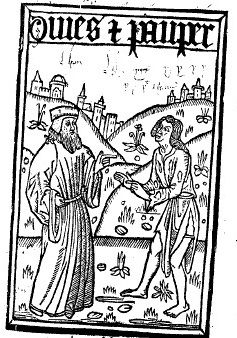
This brings me to some of the talks we have booked, and I’ll start with Dr Sarah James’ (University of Kent) exploration of a fascinating late medieval text Dives and Pauper. Sarah is especially interested in what might be termed ‘dangerous’ religious works. Such works contain ideas that some contemporary churchmen saw as heterodox or even heretical, provoking at times a violent reaction that could lead to a burning of books and people. Other works, though not as extreme, could still raise questions and debates relating to orthodox religion and the moral failings of the Church. Amongst this swirl of ideas and counter-ideas were books such as Dives and Pauper, and Sarah will examine this text on the Ten Commandments which takes the form of a conversation between Dives, the wealthy man, and Pauper, a preacher and probably a friar.
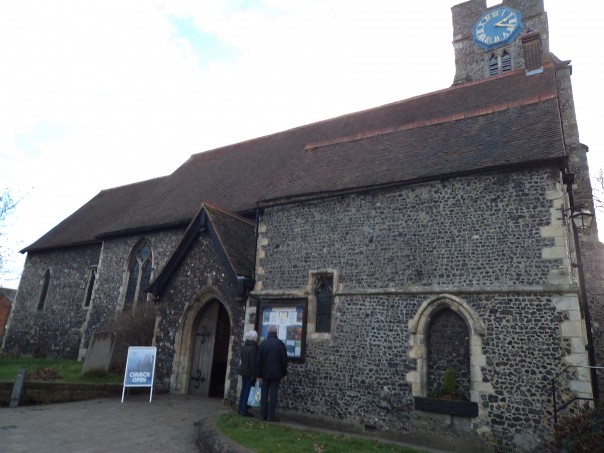
Now to the Canterbury connection, and there are two. Firstly, there is an early printed copy in Canterbury Cathedral Archives & Library. Ok, it is not one printed by William Caxton but almost as good it was printed by Wynkyn de Worde at Westminster in 1496, the book containing a full-page woodcut showing the two protagonists. The second is a testamentary reference. Now apart from religious service books or similar, there are very few references to books at all in Canterbury wills, and this is equally true for the rest of Kent as far as I have seen. Consequently, this is significant, especially because the testator had been a chantry priest at the Roper Chantry at St Dunstan’s church outside Canterbury’s Westgate. Having celebrated mass daily for his patron in St Nicholas’s chapel, for those who know the church this is the brick-built southern chancel aisle, John Fayrebarne wished to be buried there and he also made several bequests to St Dunstan’s church, including a processional book and his surplice.
His copy of Dives and Pauper, though, was not to go to the church but to William ‘my child’, a young servant perhaps or someone he was schooling. It is possible that Margaret Johnson, another beneficiary, was similarly a member of his household, or at least was a servant there because among the things she was to receive was the bedding from her bed and the stained (decorated) cloths in William’s parlour. Interestingly, his will provides few pointers to a man concerned about contemporary theological debates, but there may just be a hint of this in his bequest of 12d to the maintenance of the brotherhood of Jesus at Holy Cross church at neighbouring Westgate. Now by 1520, the Jesus mass had been celebrated in Kent for over 50 years, but it might still suggest someone for whom Christ’s humanity was especially important. Moreover, as Dr Robert Lutton (University of Nottingham) has discussed, there does seem in some cases to be a link between devotees of the Jesus Mass and those holding more heterodox religious views under the early Tudors.
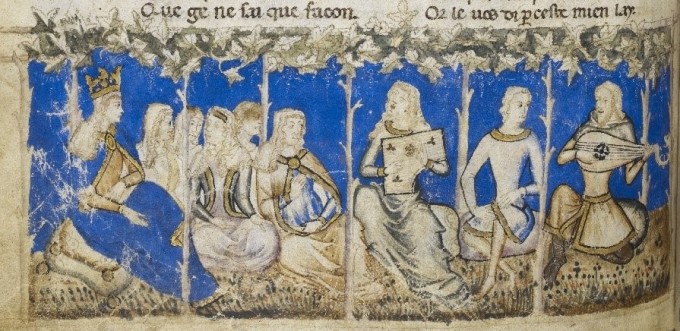
Keeping with the idea of the dramatic, the second talk I want to mention here will be given by Professor John McGavin (University of Southampton) whose knowledge of medieval and early modern drama is breath-taking, and he is most definitely a premier scholar in the field. Furthermore, having more recently had time to think in greater depth about issues regarding performance and audience beyond the stage, he is looking forward to sharing some of these ideas with people in April. For we, just like our forebears, whether consciously or sub-consciously make statements about ourselves through the way we dress, behave, use space etc. By considering such features using a wide range of sources John will show how our understanding of the past is enhanced if we attend to its public ‘theatre’.
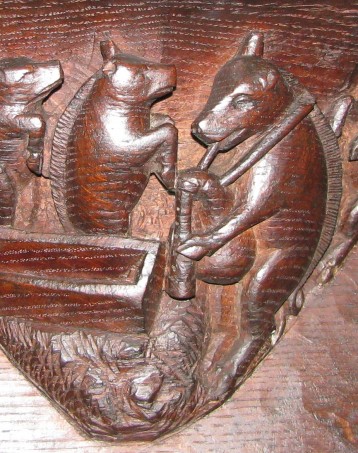
Thinking about Canterbury examples to explore such ideas, I thought I would leave aside the performative aspects of the dispute between the civic authorities and Christ Church Priory that took place around 1500, which included the mayor William ate Wode and his aldermen, with other members of the commons, refusing to take part in the priory’s Christmas Day ritual at Archbishop Sudbury’s tomb in the cathedral. According to the articles drawn up for the prior, the civic officers had instead undertaken “the customary prayers and orisons under the prison house called Westgate of the city to the great contempt of their mother church and to the wrong of the said prior and convent”. This was not the only slight at Christmastide that year for the same men refused to accompany the king’s gift to St Thomas’ shrine on his feast day.
Instead, I thought I would explore the potential of a couple of cases from the city’s quarter sessions from the same period. For not only do you get the bare-bones of the case, but it is possible, I believe, to gain an insight into the manner and attitude of those involved in the court room. For example, a priest called Sir Richard was staying at the Cheker Inn where, according to the court presentment, he frequently played at dice and cards at any time of the day and night. This was viewed as bad enough by the civic authorities, but his apparently insubordinate and dismissive attitude towards the authorities as they sought to uphold the law, seems to have riled them most particularly. For the clerk wrote that the priest “caryth nother for the mayor nor for none other and he says himself that he will lye styll in the house of the Cheker keeping his rule of unthryftness in pyrth of him that will say nay”. As with so many cases, the outcome is not recorded, but the tone of the reporting in response to Sir Richard’s outburst would suggest a fascinating encounter between ‘performers’ and ‘audience’ in the mayor’s court.
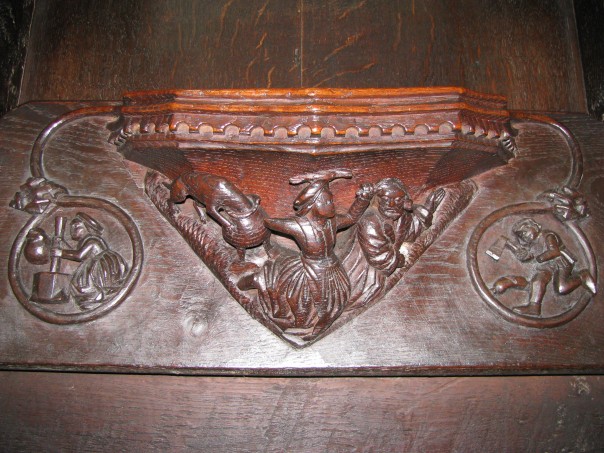
Such encounters are likely to have been even more explosive in the same court when a group of ‘actors’ were involved. In 1511, for example, seven named shoemakers were presented for gathering with 16 of their peers in Canterbury in St George’s parish and Newingate ward. This is likely to have been in the city’s main street and close to one of the most important Canterbury gates, a place where their “riotous” assembly would have been noticeable to their fellow citizens and visitors, and a place where the authorities could not ignore their ‘performance’. For at this gathering they sought to draw up their own rules whereby they would only make men’s shoes if paid at a rate of 14d per dozen and women’s shoes at 11d per dozen. Again, the clerk’s wording would seem to indicate none had shown any remorse for their behaviour when they came before the mayor, and it is feasible that they maintained this confrontational attitude, presumably meeting an equally uncompromising stance from those on the judicial bench – a scenario where ‘performers’ and ‘audience’ became interchangeable as each side responded through their own performativity.
These are just two of the 22 speakers who will be sharing their knowledge and expertise across the themes of ‘Kings & Queens’; ‘Social History’; The Church’; ‘War & Politics’, and ‘Books & Manuscripts’, so if you haven’t had a look at the Weekend’s website, please may I encourage you to do so at: https://www.canterbury.ac.uk/medieval-canterbury
 Centre for Kent History and Heritage
Centre for Kent History and Heritage Sheila Sweetinburgh
Sheila Sweetinburgh 986
986

